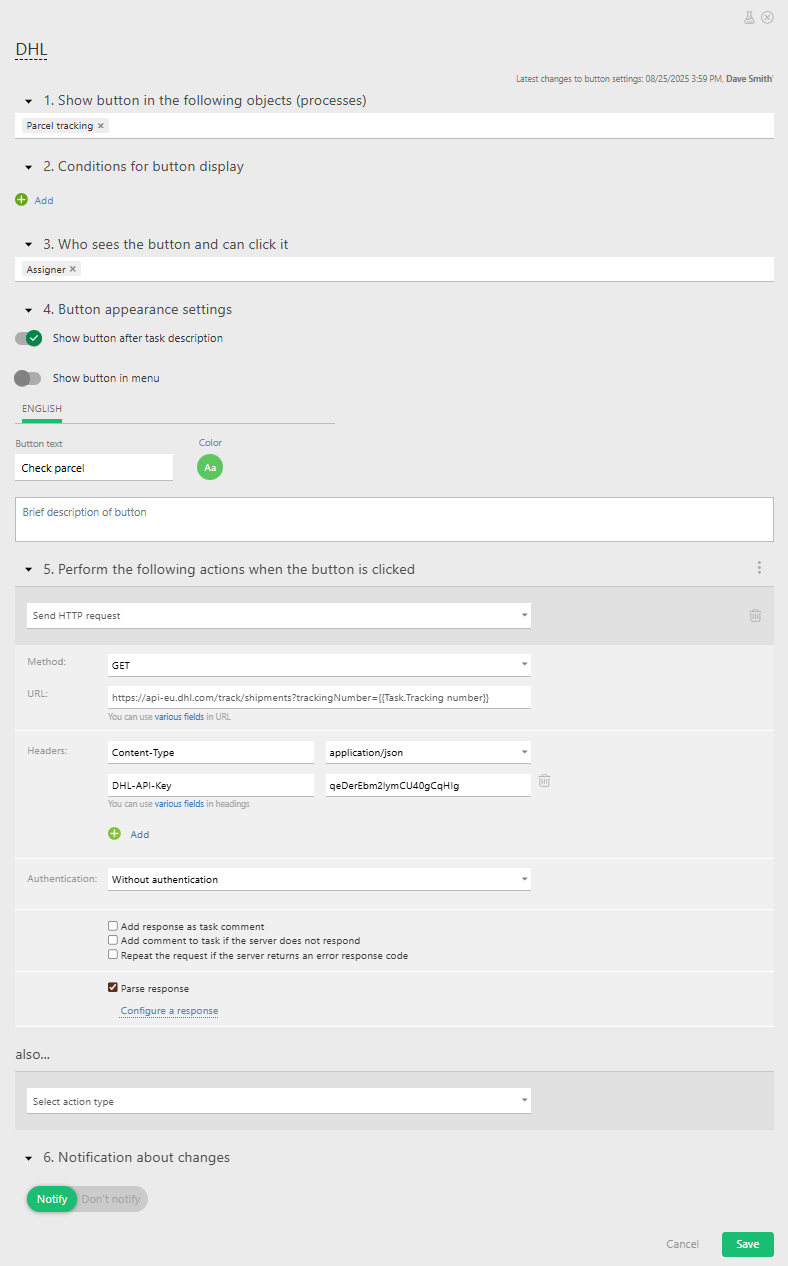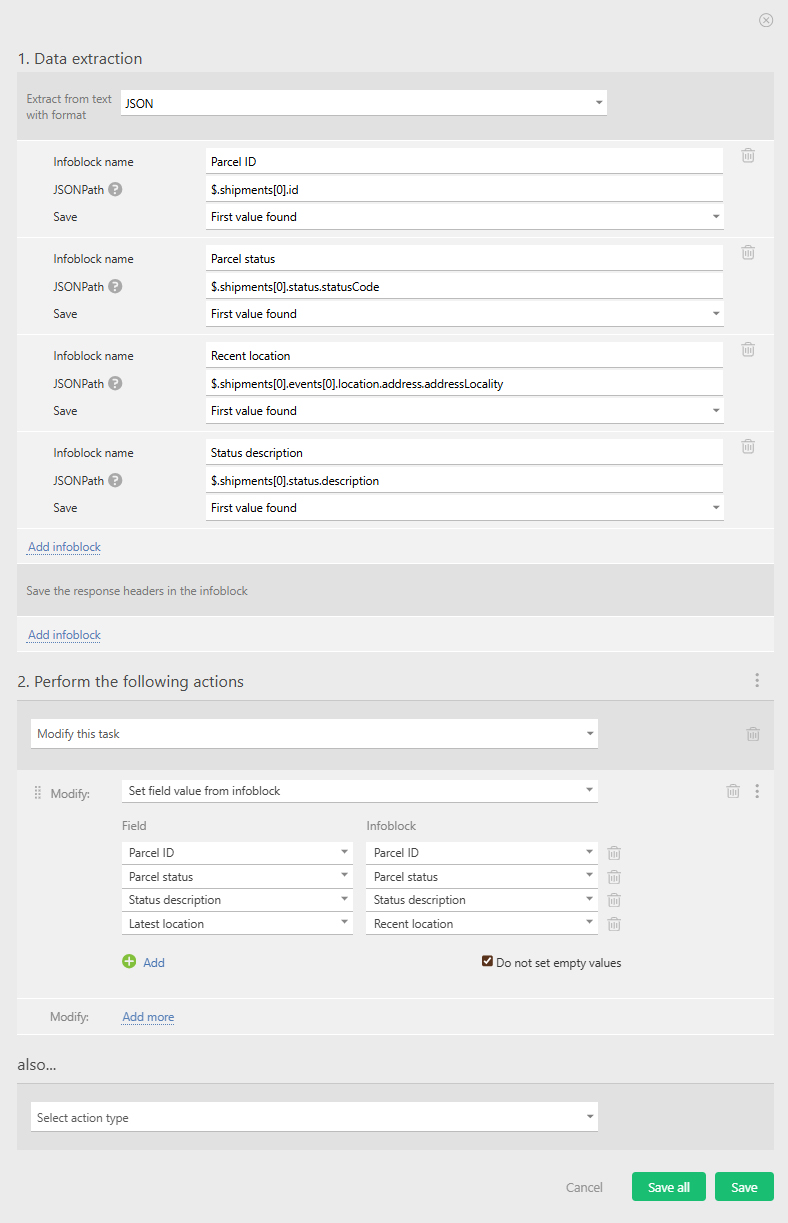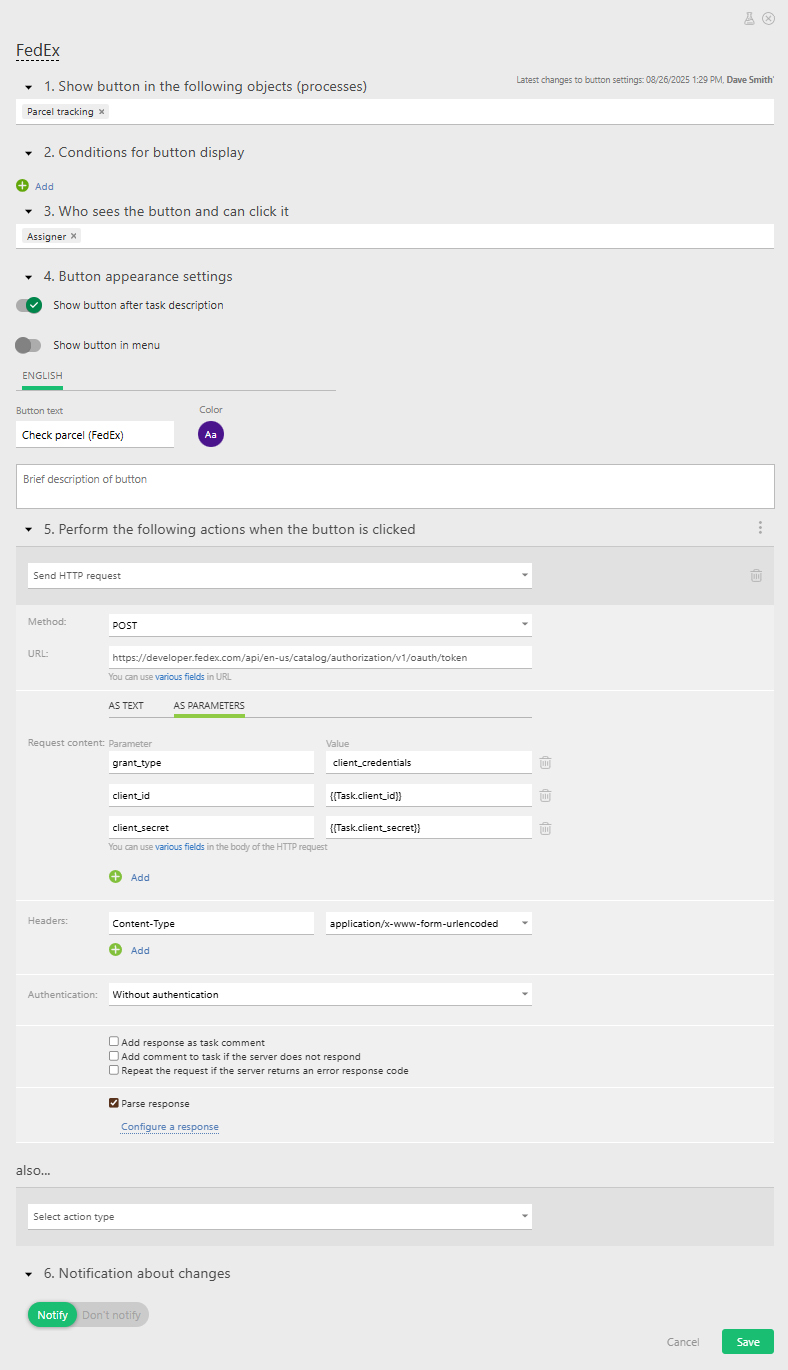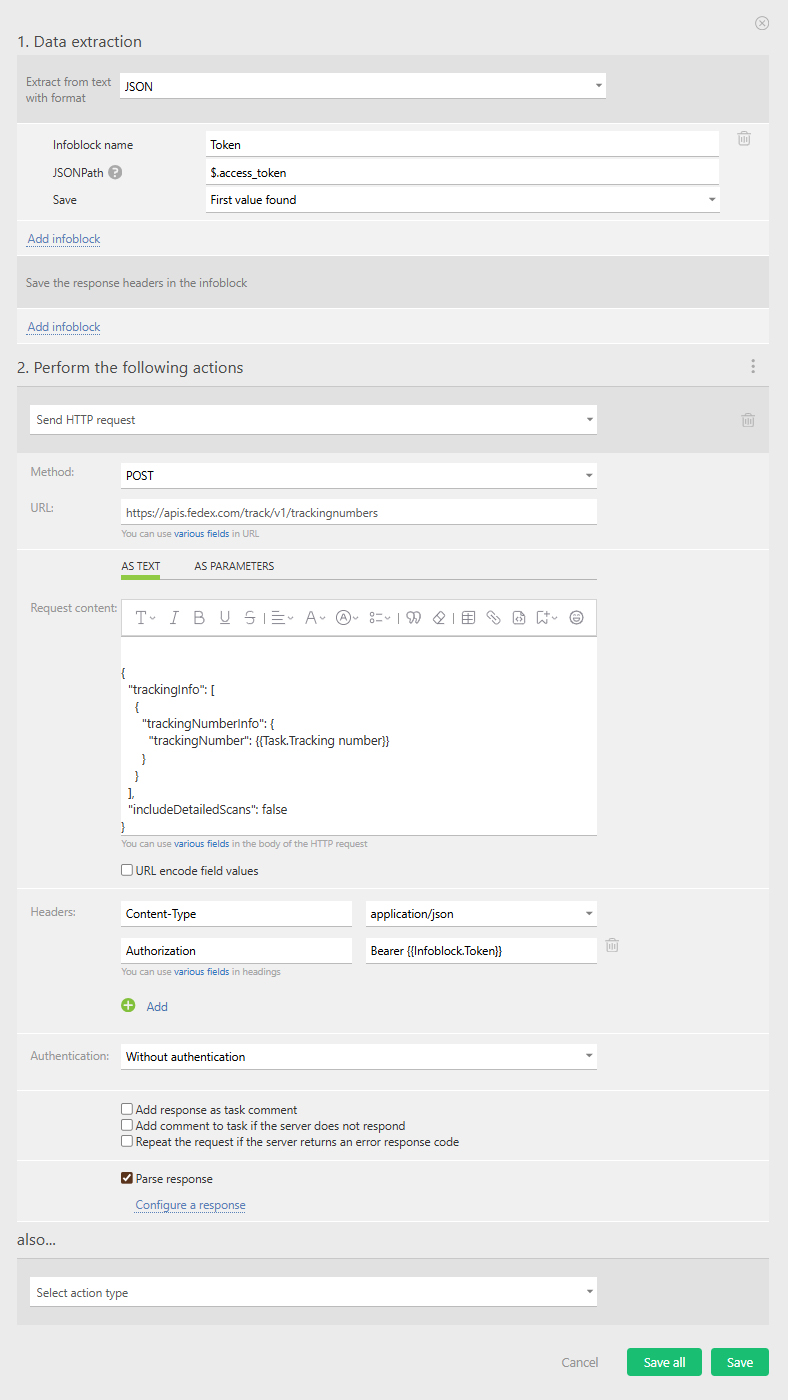HTTP requests and postal services: Difference between revisions
From Planfix
(→FedEx) |
No edit summary |
||
| Line 15: | Line 15: | ||
https://s.pfx.so/pf/T3/1AZfQB.jpg | https://s.pfx.so/pf/T3/1AZfQB.jpg | ||
== FedEx == | == FedEx == | ||
You can also track your shipment using a POST-request to the FedEx API. | You can also track your shipment using a POST-request to the [https://developer.fedex.com/api/en-us/home.html FedEx API]. | ||
*'''Step № 1''' — Here, we’ll start by sending a POST request to obtain our authorization token: | *'''Step № 1''' — Here, we’ll start by sending a POST request to obtain our authorization token: | ||
https://s.pfx.so/pf/Ki/sbfq6O.jpg | https://s.pfx.so/pf/Ki/sbfq6O.jpg | ||
Revision as of 15:04, 26 August 2025
Using HTTP Requests in Planfix, you can track shipments from transportation companies.
DHL
We’ll configure parcel tracking via the DHL API.
- Firstly, we send a GET request containing our tracking number and the API key of our app:

- Once we have received the response, we parse the shipping data received from DHL and add it to the appropriate fields:

FedEx
You can also track your shipment using a POST-request to the FedEx API.
- Step № 1 — Here, we’ll start by sending a POST request to obtain our authorization token:

- Step № 2 — Once we’ve parsed the response and received the token, we send a main request to FedEx to obtain our shipment information:

- Remember to add the token to the header of your main request.
- Step № 3 — Parse the information received from FedEx about the shipment and use it to fill in the appropriate field:

